CarEdge saved me over 4,500 dollars on a brand new Honda Pilot. I can't say thank you enough.
Price intelligence
Find a wide range of vehicle listings with market insights on new and used listings near you.


Help us personalize your CarEdge experience — it only takes a second.
Your answers help us personalize your CarEdge journey — we’ll follow up with tips and next steps that match your buying timeline.
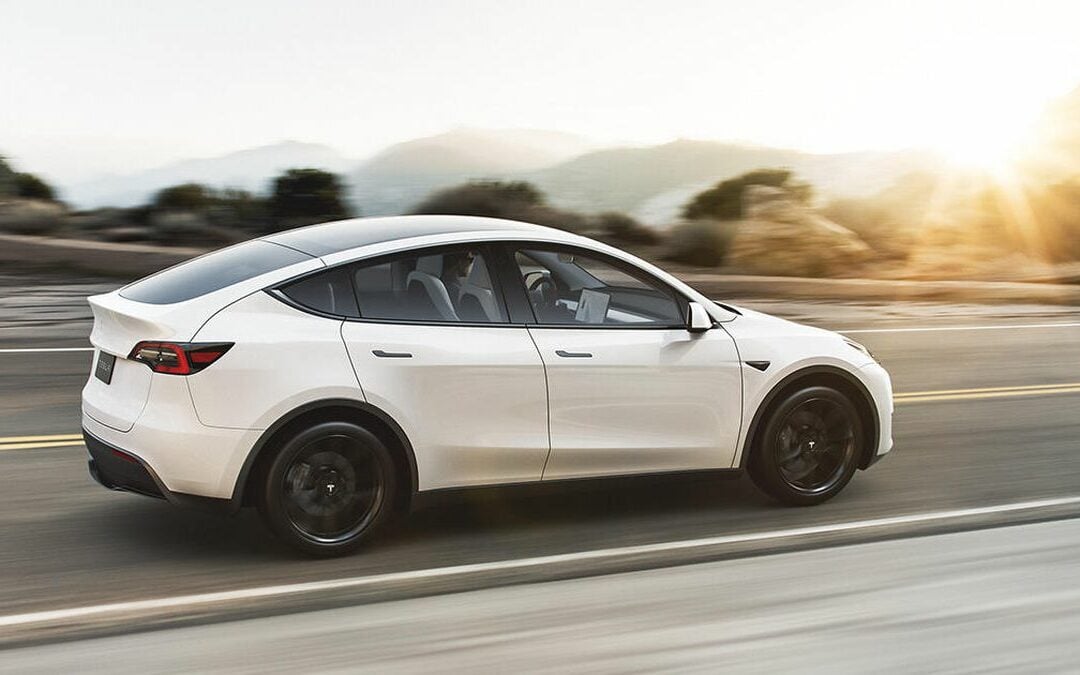
Why did most buyers stay away from used electric vehicles in years past? Most were fixated on the federal EV tax credit, which only applied to new EVs. Others were unsure about EV repair costs outside of warranty. But the calculus changes when used EV prices plummet like they have recently. Better yet, more and more models are qualifying for the federal used EV tax credit, which launched in January 2023. Here’s a look at the best used electric vehicle deals in December of 2023.
We’ve ranked the 10 best-selling EVs in America from most negotiable, to least negotiable based on market day supply.

New Average Transaction Price: $31,482
Used Average Transaction Price: $23,601
Used Market Day Supply: 100 days
Negotiability Score: Very High
The Chevrolet Bolt EV stands out as one of the most affordable electric vehicles in the American market. It’s an ideal entry-level EV, perfect for city driving and shorter road trips. Additionally, most used Bolt EVs fall within the price caps for the federal used EV tax credit, making them even more appealing.
However, the Bolt’s main drawback lies in its charging capabilities. With a peak charging rate of only 55 kW, it can take over an hour to gain 200 miles of range, which may be a concern for some buyers. In December, there are 3,487 used Chevrolet Bolts available for sale across America, with prices starting at just $10,995. Of these, 415 boast a clean record.
See pre-owned Chevy Bolt listings with the power of local market data.

New Average Transaction Price: $48,230
Used Average Transaction Price: $32,898
Used Market Day Supply: 85 days
Negotiability Score: Very High
The Volkswagen ID.4 boasts the advantage of being American-made at VW’s Chattanooga, Tennessee plant, making it eligible for the federal EV tax credit when new. Furthermore, used ID.4 models are available for around $25,000, potentially qualifying for the used EV tax credit as well. With charging speeds and range that are both average, it strikes a balance in the EV market.
However, the ID.4 is not designed for sporty performance; those seeking a more dynamic driving experience might consider other options on this list, excluding the Chevy Bolt. As of December, there are 655 used Volkswagen ID.4s for sale across America, with prices starting as low as $23,900, and 111 of these vehicles have a clean record
See pre-owned Volkswagen ID.4 listings with the power of local market data.

New Average Transaction Price: $56,546
Used Average Transaction Price: $41,100
Used Market Day Supply: 98 days
Negotiability Score: High
The Mustang Mach-E is a family-sized EV with the iconic Mustang’s spirit, offering a sporty edge to family hauling. However, it’s important to consider that its charging speeds are average, lagging behind competitors like Tesla, Hyundai, and Kia. For those interested, there are 1,327 used Mustang Mach-Es available for sale in America as of December, with prices starting at an enticing $23,999. Among these, 183 have a clean record.
See pre-owned Ford Mustang Mach-E listings with the power of local market data.

New Base MSRP: $74,990
Used Average Transaction Price: $39,674
Used Market Day Supply: 87 days
Negotiability Score: High
The Model S boasts luxury features and reliable fast charging, making it a premium choice in the electric vehicle segment. However, it’s important to note that it doesn’t offer the same cargo capacity as its siblings, the Model Y and Model X, which could be a deciding factor for some.
As of December, the market has 2,498 used Model S vehicles available across America, with prices starting remarkably low at $12,000 for a 2013 model. Among the listings, 363 have a clean record.
See pre-owned Tesla Model S listings with the power of local market data.
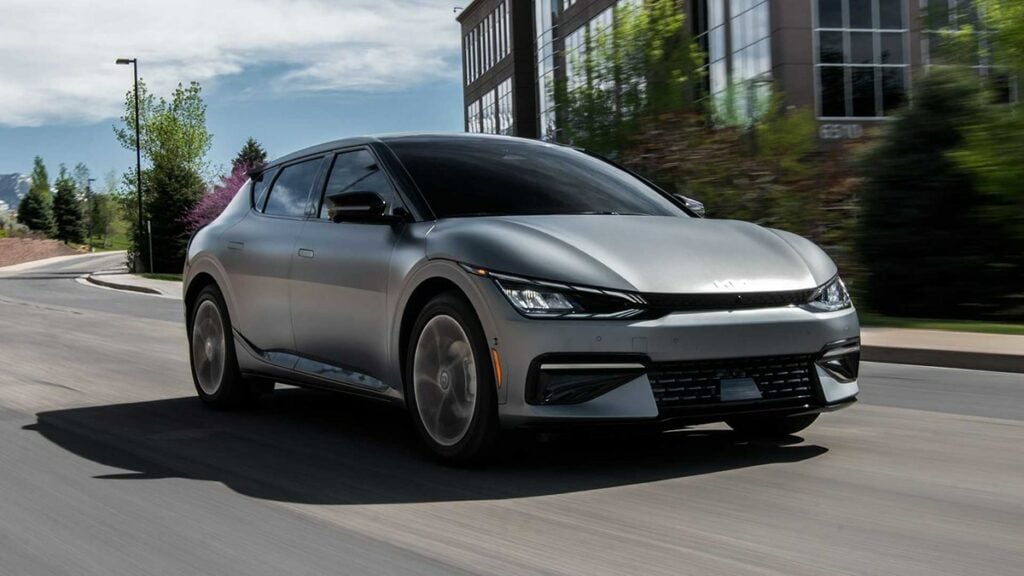
New Average Transaction Price: $52,520
Used Average Transaction Price: $40,834
Used Market Day Supply: 94 days
Negotiability Score: High
The Kia EV6, similar to the IONIQ 5, is renowned for its rapid charging capabilities and efficiency. However, buyers should note that it offers less interior cargo space typical of hatchbacks, rather than the larger capacity found in SUVs.
In the current market, there are 397 used Kia EV6s available for sale across America as of December, with the starting price at $24,922. Among these, 75 have a clean record.
See pre-owned Kia EV6 listings with the power of local market data.

New Base MSRP: $47,740
Used Average Transaction Price: $42,633
Used Market Day Supply: 57 days
Negotiability Score: Average
For car buyers considering a used Tesla Model Y, there are some key points to keep in mind. One of the major advantages is access to Tesla’s reliable and extensive Supercharger network, complemented by the convenience of frequent over-the-air updates that continually improve the vehicle.
However, potential buyers should be aware of occasional complaints regarding build quality issues. As of December, there are 2,226 used Model Ys available for sale across America, with prices starting as low as $27,500. Out of these, 339 have a clean record.
See pre-owned Tesla Model Y listings with the power of local market data.
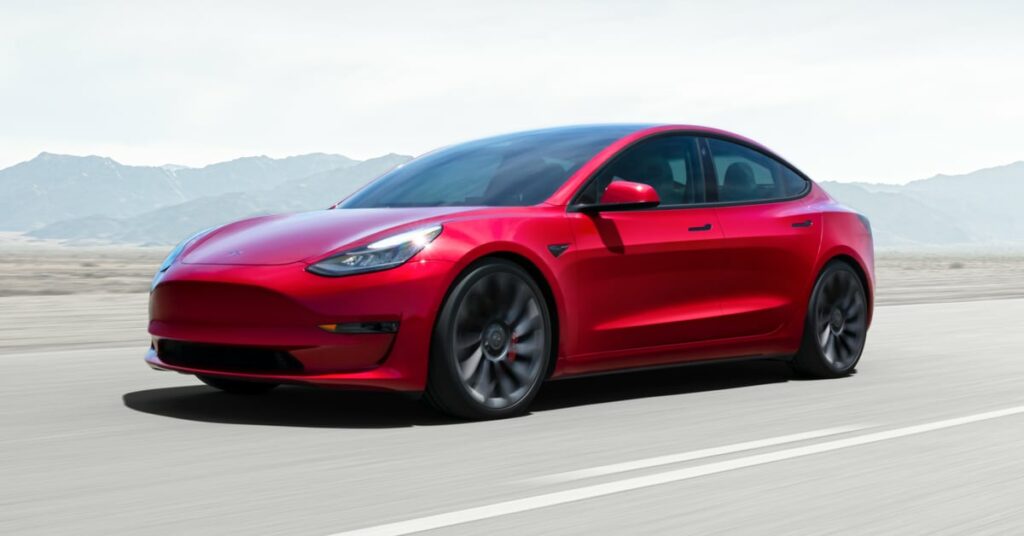
New Base MSRP: $40,240
Used Average Transaction Price: $33,368
Used Market Day Supply: 65 days
Negotiability Score: Average
The Model 3 is known for its time-tested reliability, exceptional range and efficiency, and access to Tesla’s extensive Supercharger network. However, it’s worth noting that as a sedan, the Model 3 doesn’t align with the current trend favoring SUVs and trucks. In December, there are 6,591 used Model 3s on the market in America, with prices starting at an attractive $16,990. Of these, 533 boast a clean record.
See pre-owned Tesla Model 3 listings with the power of local market data.

New Base MSRP: $79,990
Used Average Transaction Price: $54,284
Used Market Day Supply: 63 days
Negotiability Score: Average
The Tesla Model X combines the spaciousness of an SUV with the touch of luxury, notably featuring its distinctive gull-wing doors. While these doors add a unique flair, they can sometimes be more of an inconvenience in practical use. For those eyeing a 2020 or newer Model X, be prepared to invest a minimum of $50,000.
In the used car market this December, there are 1,391 Tesla Model X vehicles available across America, with the starting price as low as $23,100. Among these, 204 have a clean record, offering a variety of choices for those seeking a blend of luxury, space, and electric efficiency in their vehicle.
See pre-owned Tesla Model X listings with the power of local market data.

New Average Transaction Price: $50,581
Used Average Transaction Price: $38,965
Used Market Day Supply: 58 days
Negotiability Score: Average
The Hyundai IONIQ 5 stands out in the EV market with its e-GMP powertrain, making it one of the fastest-charging affordable electric vehicles available today. Additionally, several listings now fall within the negotiation range of the $25,000 price cap for the federal used EV tax credit, making it an attractive option for budget-conscious buyers.
However, its design is polarizing, often eliciting strong opinions; you either love its unique look or don’t. As of December, there are 389 used Hyundai IONIQ 5s for sale in America, with prices starting at a competitive $22,758. Of these, only 73 have a clean record.
See pre-owned Hyundai IONIQ 5 listings with the power of local market data.
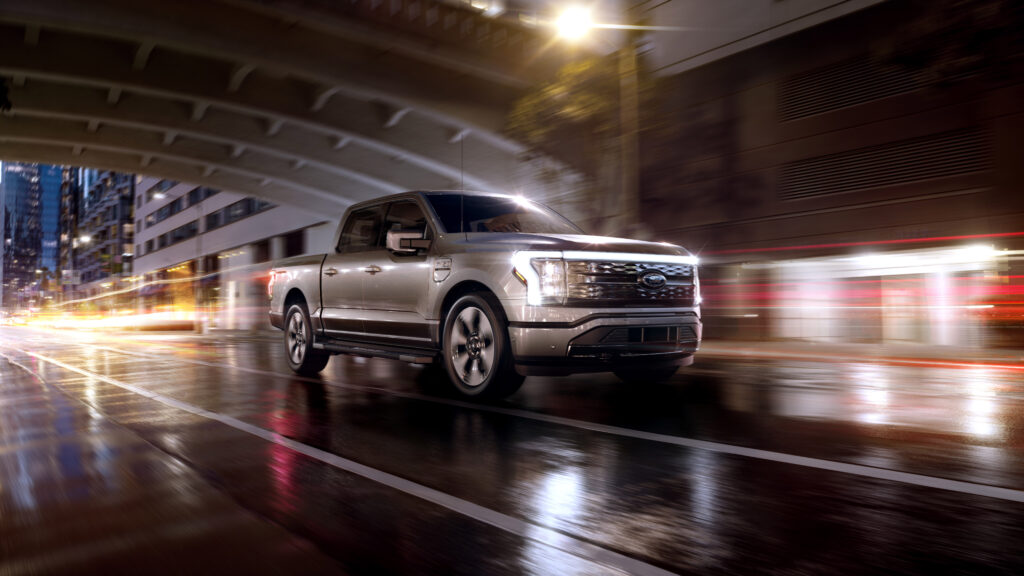
New Average Transaction Price: $71,118
Used Average Transaction Price: $68,430
Used Market Day Supply: 110 days
Negotiability Score: Very High
The Ford F-150 Lightning stands out as a full-sized electric truck capable of handling typical truck duties, a significant pro for those needing utility and eco-friendliness. However, like all electric trucks currently on the market, it experiences a significant reduction in range while towing, losing about half of its rated capacity.
Additionally, the F-150 Lightning’s charging speed is not the fastest; without access to home or workplace charging, adding 200 miles of range at a DC fast charger could take at least 45 minutes.
Ford dealers are resisting discounts, even after months of building inventory. That’s the sole reason why the F-150 Lightning isn’t ranked higher on this list of best used EV deals. In the used market, there are 516 F-150 Lightnings available for sale across America as of December, with prices starting at $39,995. Of these, only 56 have a clean record, offering options for those looking for a capable electric truck with practical utility.
See pre-owned F-150 Lightning listings with the power of local market data.

Ready to outsmart the dealerships? Download your 100% free car buying cheat sheets today. From negotiating a deal to leasing a car the smart way, it’s all available for instant download. Get your cheat sheets today!

As we wrap up summer and head into fall, the truck market is full of deals. With 2025 models arriving daily and dealers eager to sell remaining 2024 inventory, it’s a great time for negotiating, or letting us do it for you. Here’s our guide to the top truck deals of September 2024, featuring low APR financing, cash offers, and lease deals.

Starting MSRP: $40,350+
Negotiability Score: Very High (134 days of market supply)
0% APR financing for 60 months + up to $6,590 in cash savings
Nissan is fighting hard for truck market share in the U.S., with limited success. September’s zero percent financing offer is the best truck deal today. Plus, there are various cash offers that can total up to $6,590 in savings. Note that some of the cash incentives are only available as loyalty cash to current Nissan or Infiniti owners and lessees. This offer expires on 9/30/2024.
See Nissan Titan listings with local market data

Starting MSRP: $36,820+
Negotiability Score: High (202 days of market supply)
2024 Ram 1500: Up to $7,250 cash allowance on select V6 trucks
2024 Ram 1500 Classic: Up to $5,000 cash offer
Ram trucks are slow-selling, even though they seem to be everywhere you look on the road. To alleviate Ram’s oversupply of trucks, they’re offering big cash offers this month. This offer expires on 9/30/2024.
See Ram 1500 listings with local market data

Starting MSRP: $51,900+
Negotiability Score: High (108 days of market supply)
1.9% APR + $6,000 cash allowance with a trade-in
GM is offering big incentives on both the Sierra 1500 and Silverado 1500 this month. This offer expires on 8/2/2024.
See GMC Sierra 1500 listings with local market data

Starting MSRP: $48,645+
Negotiability Score: High (96 days of market supply)
1.9% APR for 36 months, or lease for $409/month for 36 months with $4,949 due
With 96 days of market supply, there’s an abundance of 2024 Silverado 1500s on Chevy dealer lots. These APR and lease offers are great deals for truck fans. This offer expires on 9/30/2024.
See Chevrolet Silverado 1500 listings with local market data

Download your 100% free car buying cheat sheets today. From negotiating a deal to leasing the smart way, it’s all available for instant download. Ready to let a car buying pro take the wheel? CarEdge Concierge is the easiest way to buy a car today. Our team finds the vehicle you want, right down to the finest of details, and negotiates on your behalf. Home delivery is available. Learn more about CarEdge’s car buying service.
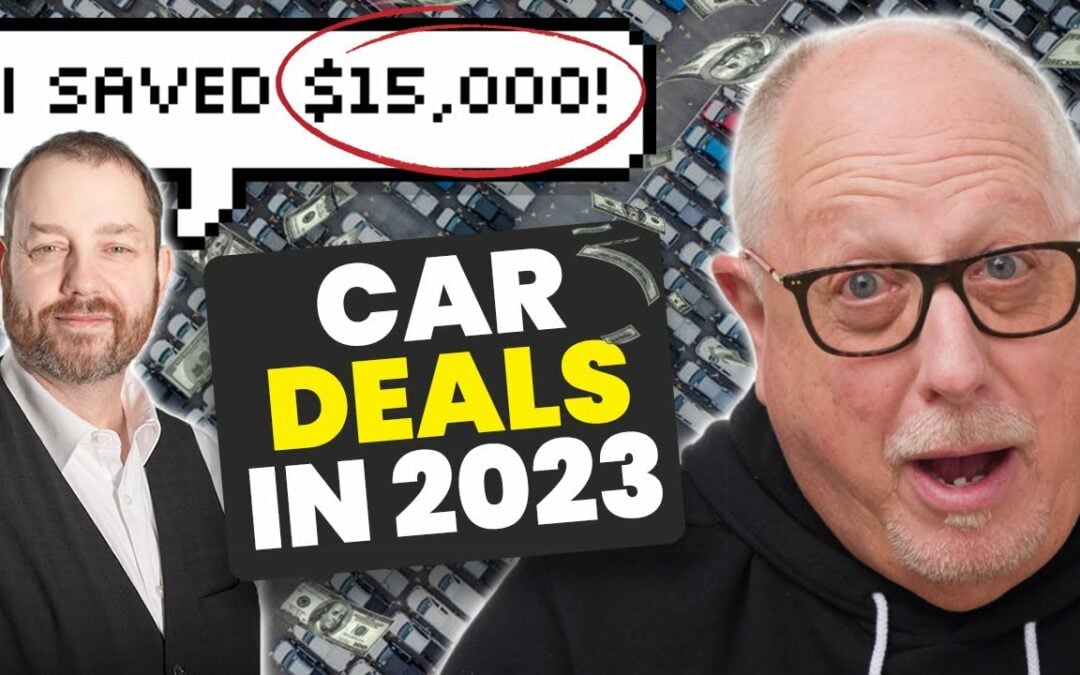
As 2023 winds down, the new car market is ripe with opportunities for big savings. As inventory climbs and 2024 models arrive, dealers and OEMs have an added sense of urgency to sell cars. We’ve gathered the best year-end deals in 2023, spotlighting the top picks for drivers looking to upgrade without breaking the bank.
👉 Also: The 5 Best End of Year Truck Deals

Starting MSRP: $29,300
Current Market Day Supply: 144 days
Negotiability Score: High
0% APR for 60 months + No payments for 90 days
The CX-5 comes with standard all-wheel drive, a rarity outside of Subaru. A flood of 2024 model year CX-5s have recently arrived at dealership lots, and with zero percent financing, it’s clear that Mazda is looking to sell them in a hurry. Mazda also has several models at 0.9% to 1.9% APR in December.
See 2024 Mazda models at $500 below invoice, and 2023 Mazda models at $1,000 below invoice!

Starting MSRP: $51,900
Current Market Day Supply: 79 days
Negotiability Score: High
$6,500 purchase allowance + $1,500 engine credit for the Elevation trim with the Turbo High-Output Engine for a total of $8,000 in cash incentives.
According to the fine print, buyers must be the current owner or lessee of a GMC or Buick vehicle to qualify for this year-end truck incentive. Costco members get an additional $1,000 in cash incentives.
See GMC Sierra 1500 listings with local market data

Starting MSRP: $28,750
Current Market Day Supply: 50 days
Negotiability Score: Average
0% APR for 60 months + no payments for 90 days + $3,000 bonus cash
The 2024 Hyundai Tucson also qualifies for 0% APR this month. Next year, the Santa Fe will undergo a controversial facelift, bringing unconventional looks to this popular SUV.
See Hyundai Santa Fe listings with local market data

Starting MSRP: $48,700
Current Market Day Supply: 112 days
Negotiability Score: High
0.9% APR for 48 months + $7,500 cash incentives + $1,000 trade assistance
The 2023 Kia EV6 is one of the fastest charging EVs on the market. The EV6 won several awards last year, and has stellar ratings from Consumer Reports. This offer compensates for the loss of the federal EV tax credit, but state and local incentives may still apply.
See Kia EV6 listings with local market data

Starting MSRP: $25,900
Current Market Day Supply: 132 days
Negotiability Score: High
0% APR for 36 months for the 2023 and 2024 Altima, + $500 Nissan loyalty cash
Altima sales were up 35% in 2022, giving Nissan a shot at recovering from years of market share losses to Toyota and Honda. Following efficiency upgrades, the Altima gets up to 39 miles per gallon on the highway.
See Nissan Altima listings with local market data
More deals this way 👉 The 5 Best End of Year Truck Deals

At CarEdge, December is the highlight of our year. It’s a time when high vehicle inventories merge with attractive year-end deals, and with the potential rise in financing rates on the horizon, it presents a prime opportunity to land an amazing deal on a new car. These 5 top picks represent incredible value. You could even call it a buyer’s market (for this month, at least).
👉 Don’t miss the complete guide to ALL of the best end of year deals
Ready to outsmart the dealerships? Download your 100% free car buying cheat sheets today. From negotiating a deal to leasing a car the smart way, it’s all available for instant download. Get your cheat sheets today!

December brings enticing year-end deals, especially for Toyota fans. While interest rates have risen, Toyota offers exceptionally low rates through manufacturer incentives, alongside impressive lease deals. These are the top Toyota offers this month.

Toyota’s end-of-year deals feature APRs as low as 2.99%, and cash offers over $1,000. For even better deals, check out our 5 Top Picks For December.
2023 Camry, 2023 RAV4 (excludes hybrids), 2023 Corolla and Corolla Hatchback (excludes hybrids): 3.99% APR for 48 months, 4.99% APR for 60 months, 5.49% APR for 72 months + $1,000 cash offer (applied to down payment when you finance with Toyota Financial Services)
2023 RAV4 Hybrid and Corolla Hybrid: 4.99% APR for 48 months, 5.99% APR for 60 months, 6.49% APR for 72 months
2023 Highlander (FWD models only): 2.99% APR for up to 72 months
2023 Highlander hybrid: 4.99% APR for 48 months, 5.99% APR for 60 months, 6.49% APR for 72 months
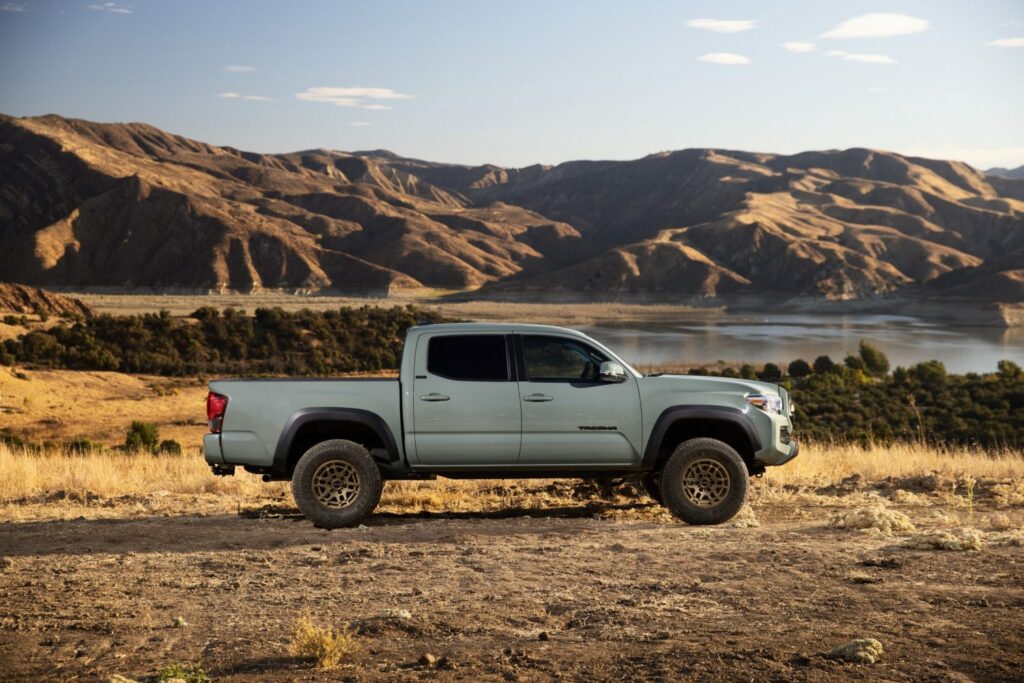
2023 Tacoma (4×2 models): 2.99% APR for 60 months, or 3.49% APR for 72 months
2023 Tacoma (all trims, including 4×4): 3.99% APR for up to 72 months
2023 Tundra: up to $1,500 cash offer (applied to down payment when you finance with Toyota Financial Services)
See Toyota listings with local market data.
Learn more about these December deals at Toyota.com
The sales and incentives we’ve all been waiting for are finally here. In a perfect storm of high inventory, stagnant sales, and a surge of 2024 models arriving by the day, it’s safe to say that the car market has finally flipped. With Toyota inventory higher than it has been for over two years, buyers have additional negotiating power in the final weeks of 2023.
Don’t go it alone when you shop dealership lots. Take CarEdge Data with you! CarEdge Data takes the guesswork out of car buying. See the real-time fair price, local inventory numbers, days on the market and more for every listing. Learn more about CarEdge Data.
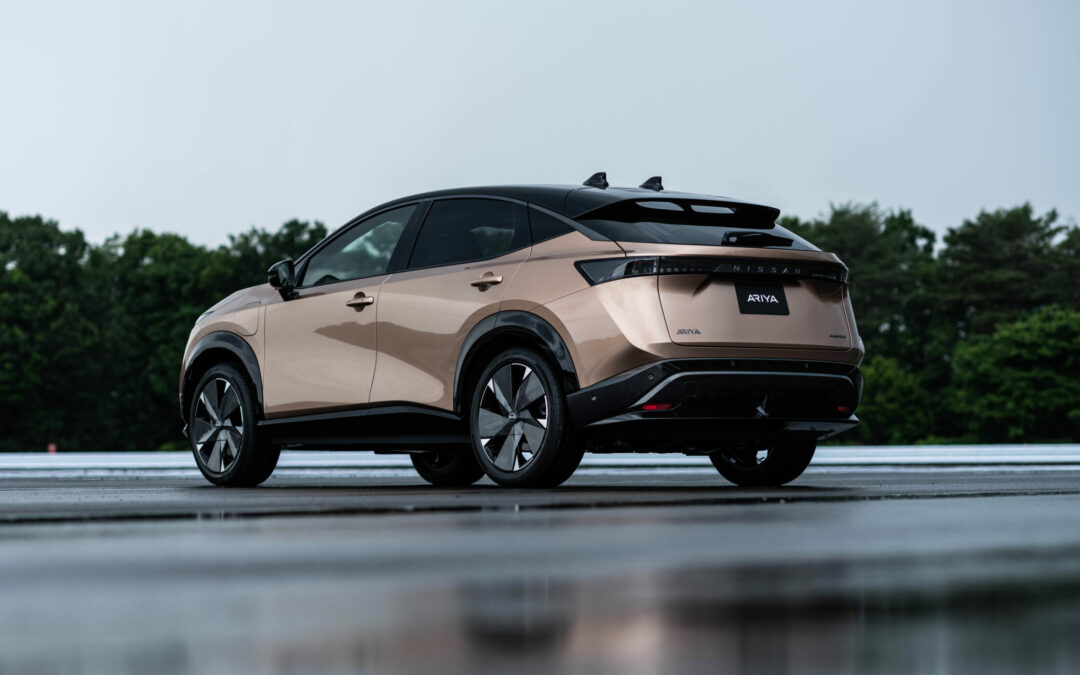
As electric vehicles increasingly populate the roads, understanding the ins and outs of the EV market can equip car buyers with leverage to negotiate big savings. Currently accounting for 7.9% of new car sales in America, the EV market is undeniably expanding. However, it’s not without its challenges. We’ll delve into the complexities behind the EV market’s growth, the latest EV inventory update, and which models have the best year-end deals this December.
The EV market is growing, with electric vehicles now making up 7.9% of all new car sales in America. However, the market is experiencing its share of challenges. While some new electric models fly off the lots, others linger far longer.
What’s behind the buildup of EVs on dealer lots? First, it’s worth pointing out that OEMs have ramped up production, sending more cars to dealer lots. But as it turns out, there aren’t as many buyers as they’d hoped for. And 57% of EV buyers are still opting for a Tesla, which sells directly to consumers. Other direct-to-consumer newcomers like Rivian, Fisker, and Lucid are also growing in market share.
On top of that, there’s a natural shift happening in the market for EVs, one that’s been expected for a while. As 2024 approaches, we’re coming to the end of the ‘early adopter’ phase of EV sales. Many of the higher-income, more tech-curious drivers who were eager to go electric have already purchased an EV. What’s left is the rest of the auto market, which makes up the vast majority of buyers.
Why aren’t more car buyers choosing an EV? The lack of reliable charging infrastructure is the most commonly cited reason, with higher prices being a close second. Another reason for EV hesitation is the uncertainty of possible repair costs outside of warranty. Sure, fuel savings can add up quickly, but what would it cost to replace a damaged battery pack? Savvy buyers want to know more about the total cost of ownership.
But make no mistake: EV sales are still growing. They’re just not growing exponentially like they did a few years ago. Here’s a look at quarterly EV market share in America over the past three years.
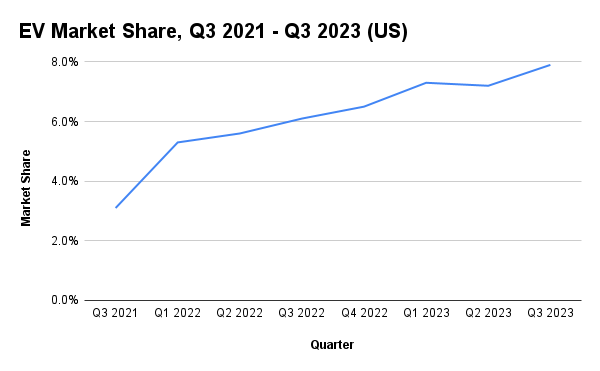
All analysts predict EV sales to grow in the future, but the extent of growth varies. The consensus average stands at 35% EV market share in 2030. Growth rates will have to accelerate in order to achieve that. Time flies, and we’re only six years away.
At CarEdge, we preach that to find the most negotiable cars, follow the inventory numbers. A key factor in understanding these sales dynamics is Market Day Supply. This indicator shows how long it would take to sell off current inventory at recent sales rates.
The entire new car market is undergoing a rapid rise in inventory. Our latest new car inventory update shows that several domestic car brands are seeing in excess of 75 days of market supply in December. In a healthy ‘normal’ market, that number is 45 to 60 days of supply.
EV inventory has grown steadily in 2023. CarEdge Data has revealed some eye-opening figures. New EV inventory has reached unprecedented levels.
Take the Ford Mustang Mach-E, for instance. Its supply has skyrocketed to 337 days, a stark contrast to its initial hype as a ‘Tesla-killer’. Other popular models like the Hyundai IONIQ 5 and IONIQ 6 are facing 125 and 156 days supply, respectively, despite their acclaimed ultra-fast charging speeds and industry accolades. The Kia EV6 is right up there too with 153 days of supply, more than double the inventory of one year ago. Nissan’s follow-up to the LEAF, the Ariya, now has an MDS of 209 days. Perhaps buyers are balking at a $50,000+ price tag for a Nissan crossover. Who would have thought?
Surprisingly, some of the least recommended EVs are selling more quickly. The Subaru Solterra actually has a relatively normal supply right now with a market day supply of 57 days. The Toyota bZ4X sits at 87 days. The Lexus RZ has 78 days of market supply. Why wouldn’t we recommend these three popular EVs for most buyers? They charge quite a bit slower than other options on the market for a similar price. Yet, loyal Subaru, Toyota and Lexus fans seem to be buying them.
Most other EV models are sitting on dealer lots for much, much longer.
Here’s a snapshot of the current dealer inventory for new electric vehicles in America, excluding Tesla and other direct-to-consumer brands. We’ve included data from December and October to shed light on recent inventory trends:
| Make | Model | Day Supply (10-2023) | Day Supply (12-2023) | Total For Sale (12-2023) |
|---|---|---|---|---|
| Audi | Q4 e-tron | 111 | 148 | 2967 |
| Audi | Q8 e-tron | 98 | 117 | 3194 |
| Audi | e-tron GT | 62 | 229 | 834 |
| BMW | i4 | 60 | 82 | 3775 |
| BMW | i5 | N/A new model | 114 | 2275 |
| BMW | i7 | 129 | 151 | 2032 |
| BMW | iX | 81 | 113 | 4148 |
| Cadillac | Lyriq | 151 | 139 | 3981 |
| Chevrolet | Bolt EV | 60 | 113 | 2390 |
| Chevrolet | Bolt EUV | 57 | 75 | 5585 |
| Ford | Mustang Mach-E | 204 | 337 | 25334 |
| Ford | F-150 Lightning | 182 | 124 | 13174 |
| Genesis | GV60 | 190 | 178 | 1723 |
| GMC | Hummer EV | 80 | 58 | 876 |
| Hyundai | Kona EV | 60 | 109 | 214 |
| Hyundai | IONIQ 5 | 102 | 125 | 8816 |
| Hyundai | IONIQ 6 | 73 | 156 | 5869 |
| Jaguar | I-Pace | 647 | 682 | 379 |
| Kia | EV6 | 106 | 153 | 4741 |
| Kia | EV9 | N/A new model | N/A new model | 547 |
| Lexus | RZ | N/A new model | 78 | 2441 |
| Mercedes | EQS | 221 | 159 | 4224 |
| Mercedes | EQS SUV | 221 | 176 | 86 |
| Mercedes | EQE | 144 | 190 | 1397 |
| Mercedes | EQE SUV | 100 | 89 | 3198 |
| Mercedes | EQB | 88 | 93 | 3628 |
| Nissan | Ariya | 108 | 156 | 5435 |
| Nissan | Leaf | 161 | 209 | 2706 |
| Porsche | Taycan | 239 | 142 | 2735 |
| Subaru | Solterra | 96 | 57 | 1306 |
| Toyota | bZ4X | 102 | 87 | 2459 |
| Volkswagen | ID.4 | 125 | 103 | 11140 |
| Volvo | C40 | 128 | 105 | 808 |
| Volvo | XC40 Recharge | N/A | 137 | 1519 |
This is NOT normal, folks. You can’t sugarcoat the fact that in America, electric vehicles are not selling as quickly as automakers had expected. That’s precisely why so many are sitting on dealer lots right now.
High interest rates are also a factor, as the cost of financing a $50,000+ vehicle is unattainable for many. The average price of an electric vehicle is $51,762 as of our latest EV price update.
Yes, EV inventory is sky-high, but what does this mean for potential EV buyers? First, the bad news. Our CarEdge Coaches are quite frankly shocked by how stubborn car dealers are refusing to lower EV sticker prices. Even with 150 to 300+ days of supply, up to 6 times the norm, most Ford dealers haven’t discounted Mustang Mach-Es or F-150 Lightnings. The same rings true for Mercedes-Benz’s growing electric lineup.
The good news is that increasing inventory suggests that buyers certainly have more room to negotiate. This is especially true for models with a higher days supply. Recent spikes in EV inventory have already led to some CarEdge Community members successfully negotiating significant discounts off EV sticker prices. This trend indicates that EVs, contrary to what dealers will tell you, are indeed negotiable. Importantly, buyers should come prepared with negotiation know-how and recent car market insights. Prepare to save big on your next car with Deal School (100% FREE).
Here’s our comprehensive list of the best year-end EV sales, along with our negotiability score based on the inventory numbers shared above:

2023 Subaru Solterra: 0% APR for 72 months
2023 Ford Mustang Mach-E: 0.9% APR for 60 months + $3,000 cash offer+ No payments for 90 days
2024 Kia EV6: 0.9% APR for 48 months + $3,750 cash offer
2023 Nissan Ariya: 2.9% APR for 36 months + up to $3,750 cash offer
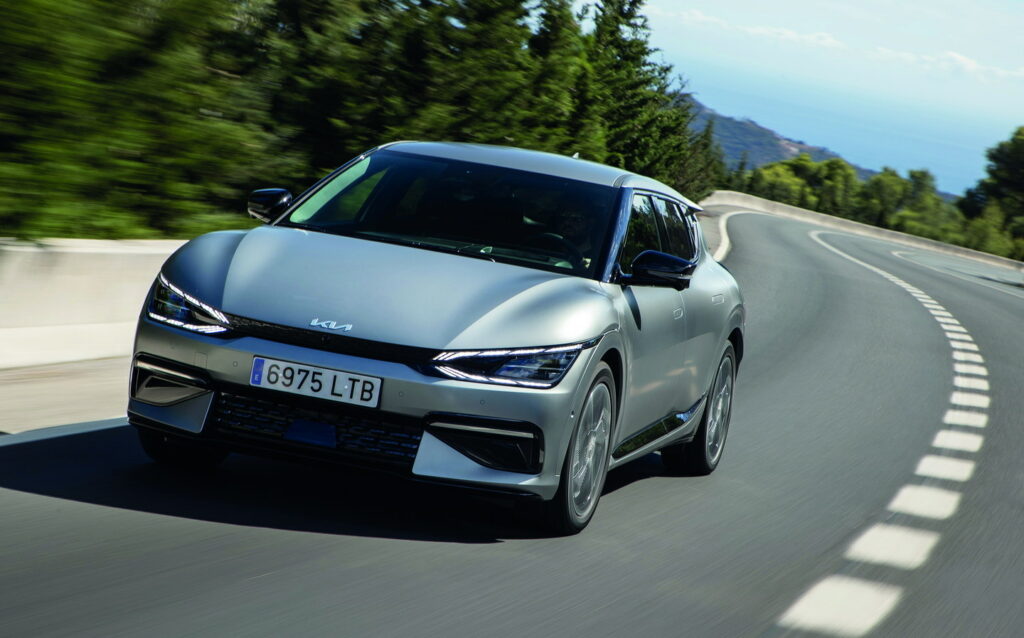
Tesla Model 3 RWD: $329 per month for 36 months with $4,500 due
Chevrolet Bolt EUV: $369/month for 36 month with $6,659
Tesla Model Y RWD: $399 per month for 36 months with $4,500 due
Kia EV6: $379/month for 36 months with $4,999 due
2023 Subaru Solterra: $399/month with $0 down payment
BMW i4: $499/month for 36 months with $4,599 due
Volvo XC40 Recharge and Volvo C40: Up to $8,500 in lease credit for qualified lessees
See all of the best year-end car deals in December
Despite dealers’ reluctance to reduce sticker prices, high inventory presents a unique negotiation opportunity for EV buyers. For those equipped with the right market insights and negotiation strategies, the end of 2023 could be the perfect time to secure big savings on an electric vehicle.
Remember, knowledge is power in this market, and being well-informed can lead to significant savings on your next EV purchase. Keep an eye on the market trends and be ready to make a smart, well-negotiated buy as we step into the new year.
Take this with you: 100% Free Car Buying Cheat Sheet
